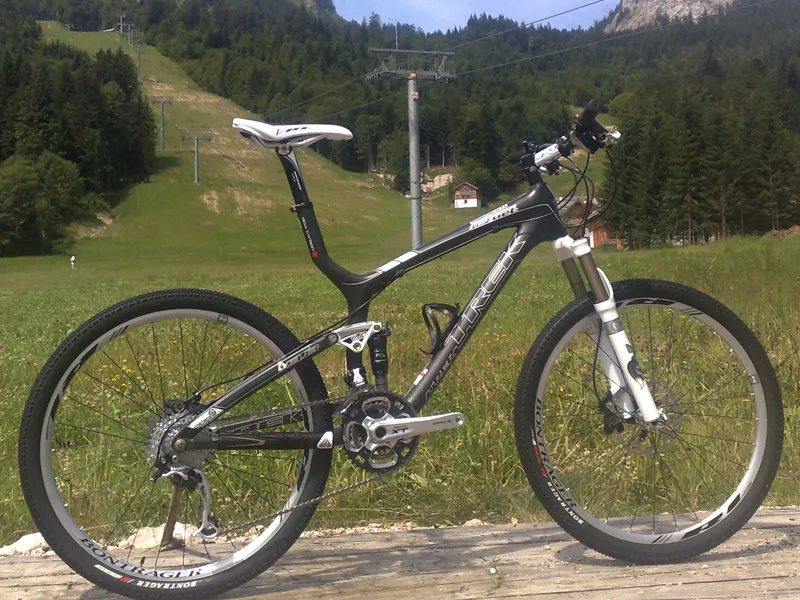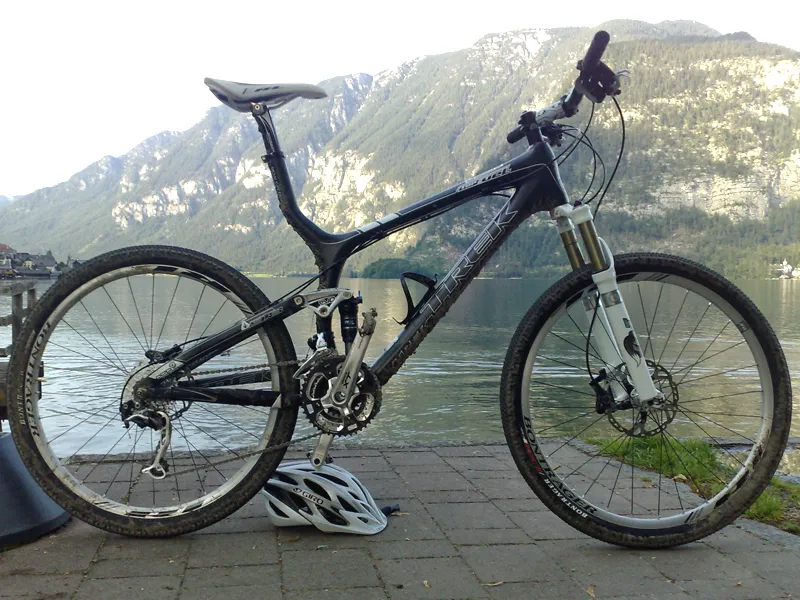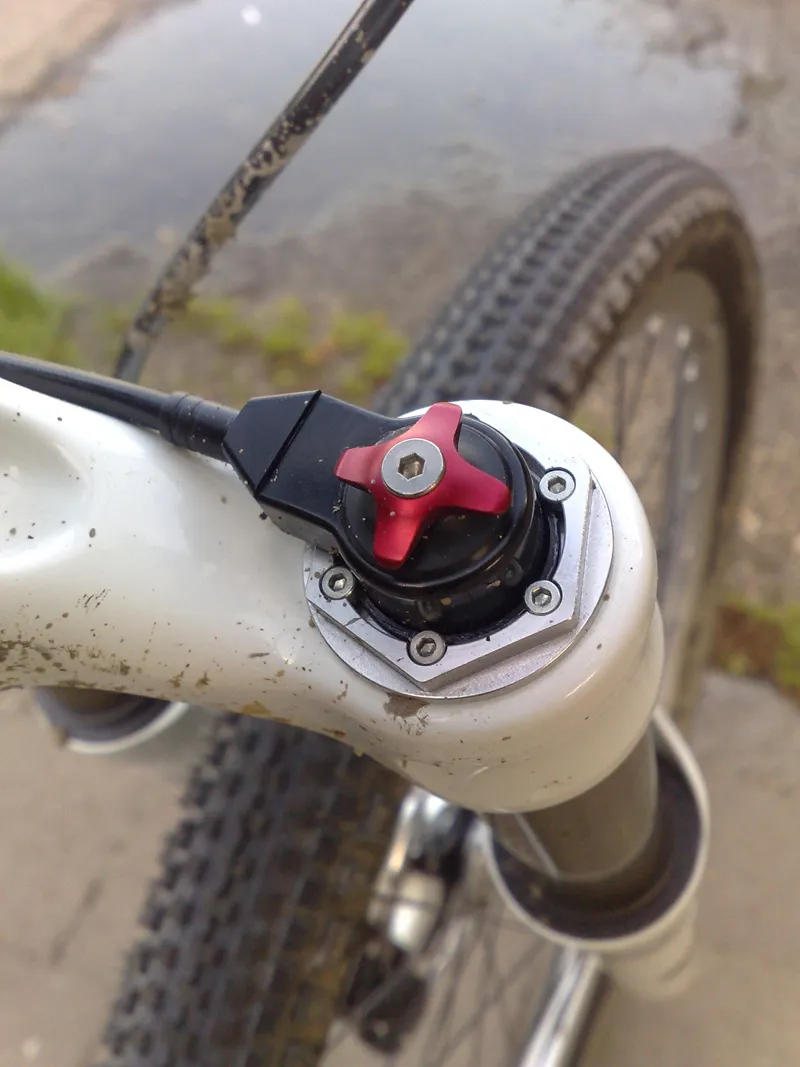Don’t tell the guy up the front with the pointer and the big presentation, but we’re bringing you this report live from Trek’s 2010 launch in Baa Lamb, near Loser in Austria.
Loser certainly isn’t an insult you can throw at Trek right now, as their suspension line-up has never looked better, with some of our favourite platforms at 100, 120 and 160mm travel levels.
It’s practical development time and properly embracing the reality rather than the theory of riding that’s made the big difference. It’s certainly no coincidence that Trek’s product has punched its way back to the top of the heap since they constructed their own trail network right across the road from their site in Wisconsin.
It’s not just a bit of brashed out cheeky trail either. Trek employ two full-time trailbuilders to keep the mix of singletrack and shore buffed and groomed so their lunchtime rides are as fun as possible. Add paying employees to commute to work and having their own R&D and top-end construction elements in house, and Trek are obviously a very proactive, pro-bike setup.
This is sounding like a corporate promo right now though, so how does all this work translate onto the trail?
Top Fuel
The carbon mainframe, oversized net-moulded BB90 bottom bracket and headset bearings, crossbow seat tube and carbon seatstays on Trek’s top race frame, the Top Fuel, are unchanged, so you’re still getting a light, tight chassis to pin your podium hopes on. Proper contenders will love the fact the narrower ‘ABP race’ quick-release skewer now fits easily into a turbo trainer for pre-lap warm-ups.
The major change is that the rear shock is now a custom-tuned “Race Cam” Fox Float rather than a DT Swiss. The custom tuning basically involves turning up the contrast knob on the RP23 settings so that’s it’s more like your granny’s TV. So, position three is now an almost complete lockout setting while one is barely ‘platformed’ at all.
Added to that is the reconfigured Boost Valve technology you get on most Fox air shocks this year. Rather than just relating to bottom-out, Boost Valve IFP pressure now also controls the ProPedal platform behaviour of the shock.
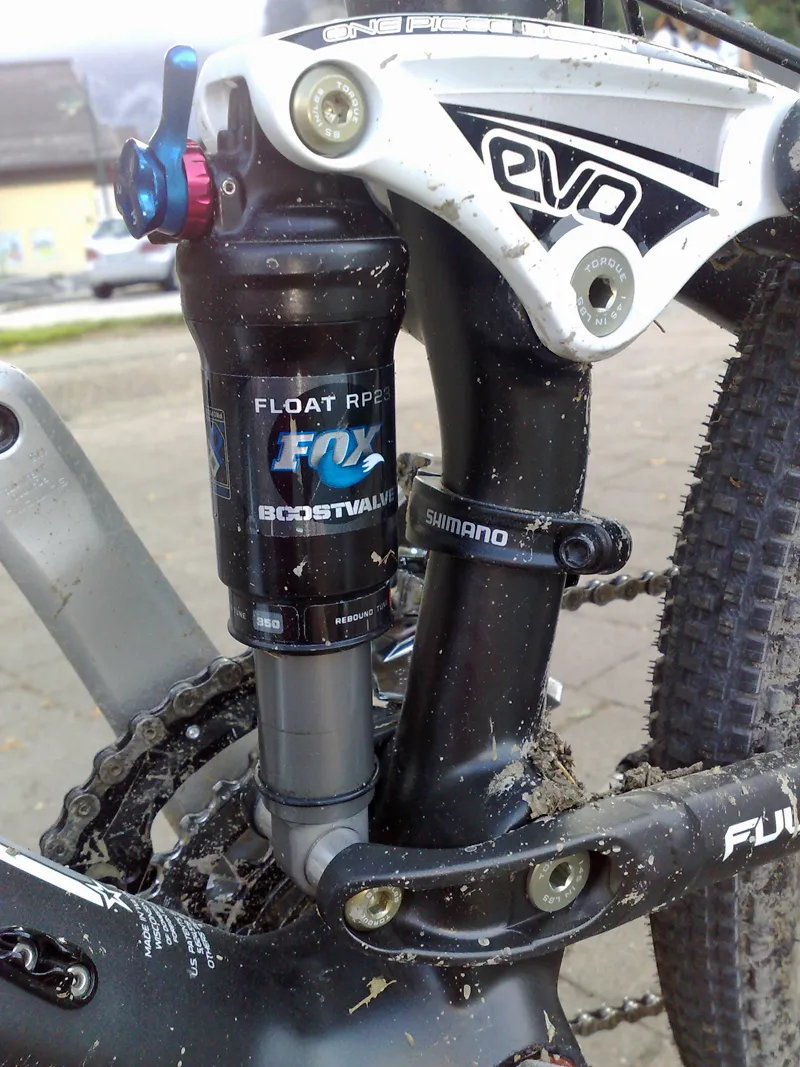
The Top Fuel shocks run a high (350psi) Boost Valve pressure to give a lot of low-speed compression. As it is IFP (Internal Floating Piston) linked it extends a lot deeper into the shock stroke than a mechanical shim style damping system. The result is a lot less unwanted motion when you start mashing the pedals, even when you’re a fair way into the stroke coming out of a compression or big hit.
The Boost Valve effect also works when the ProPedal is off, keeping the Top Fuel in a permanently taut and tight frame of mind. However a ‘Light’ velocity tune means the shock still feels open, smooth and ready to eat the ugly stuff once you’re through the compression ‘crust’.
Bikes higher up in the range also get a matching Fox F100 fork, with a remote lockout lever. There are more shock changes on the longer travel (120mm) Fuel EX trail platform. We’ll tell you about them once we’ve ridden the bike properly, but look to Gary Fisher’s Roscoe platform for shock and fork clues.
Top of the hill
We didn’t get a hit on the top-line £5,499 TF9.9 bike (SRAM XX group and Bontrager XXXlite wheels, 21.18lb) but even the XT and mostly mid-level Bontrager equipped TF9.8 clocks in at 23.8lb. This is already competitively low for a 100mm bike, but you’re investing in a lot of future weight-saving, speed-gaining upgrade potential. It’s certainly a good value privateer racer/fast trail bike.
The Top Fuel is a genuinely versatile racer/trail bike too. Heading up, the frame is impressively stiff. However much you’re heaving the bars to rip past a bunch of stalled Euro journalists who rarely ride mud and roots there’s no wallow and – unlike many race platforms – no ghost shift or gear grind either.
The oversized, narrow-span bottom bracket really helps you get your power down too, although you may want to adjust your cleat angles slightly to compensate for the narrower stance. The Boost Valve and new RP lever settings keep the rear end much more stable under power.
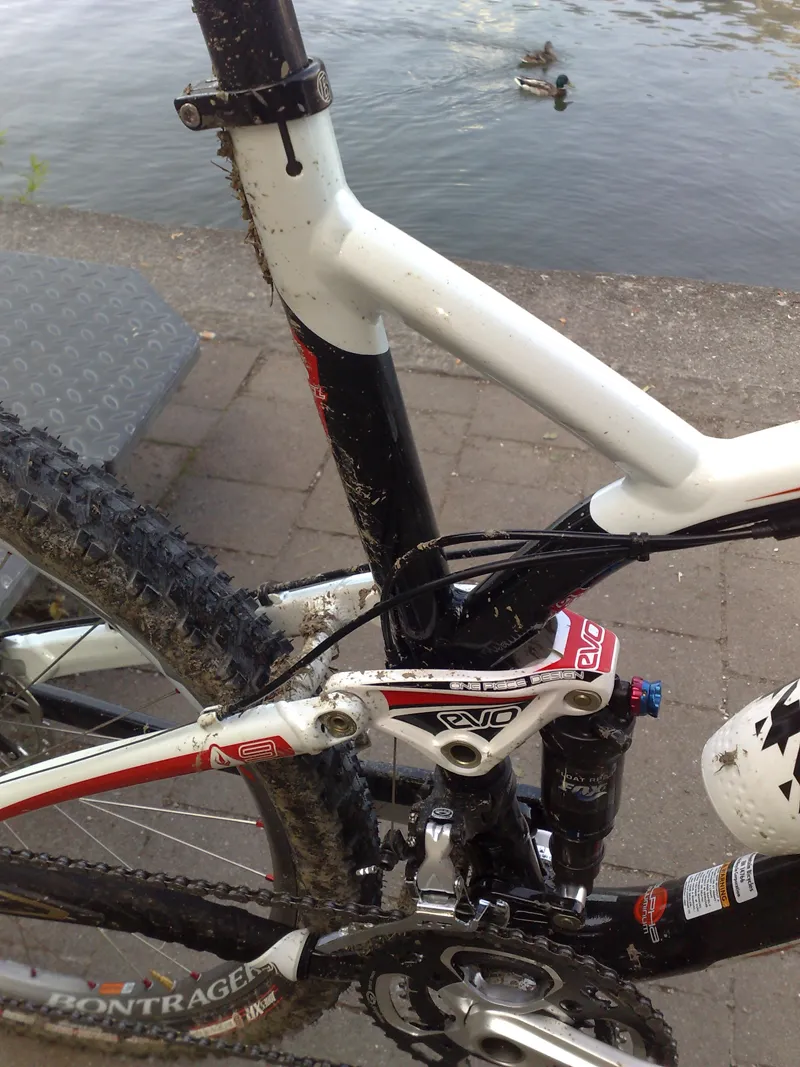
Previously, flicking the ProPedal lever was an essential on Trek ABP (their proprietary rear axle centred pivot system) bikes as soon as you hit something steep and smooth. On our trial ride, we were using the lever for reference/test obligation purposes early on, but there’s so little bob, even with the shock ‘open’, that we soon stopped bothering.
On our first ride the lockout equipped Fox fork was a little less convincing as all samples suffered seriously notchy stiction issues. It’s a standard oil bath Fox though, so that tightness is unlikely to last beyond the first 10 hours of so of riding, and certainly not worth calling out the bike on.
The trade-off of the more stable rear end is more kick-around and potential for wheel spin on loose or small bump infested rock/root surfaces. It’s much less of a compromise than we expected though, and while it’s not comfortably plush in a trail-sucking sense there’s certainly still enough traction to keep you connected at higher speeds on sketchy terrain. Unlike many very progressive feeling race bikes, you can keep the Top Fuel compliant over the small stuff and still regularly get full travel too.
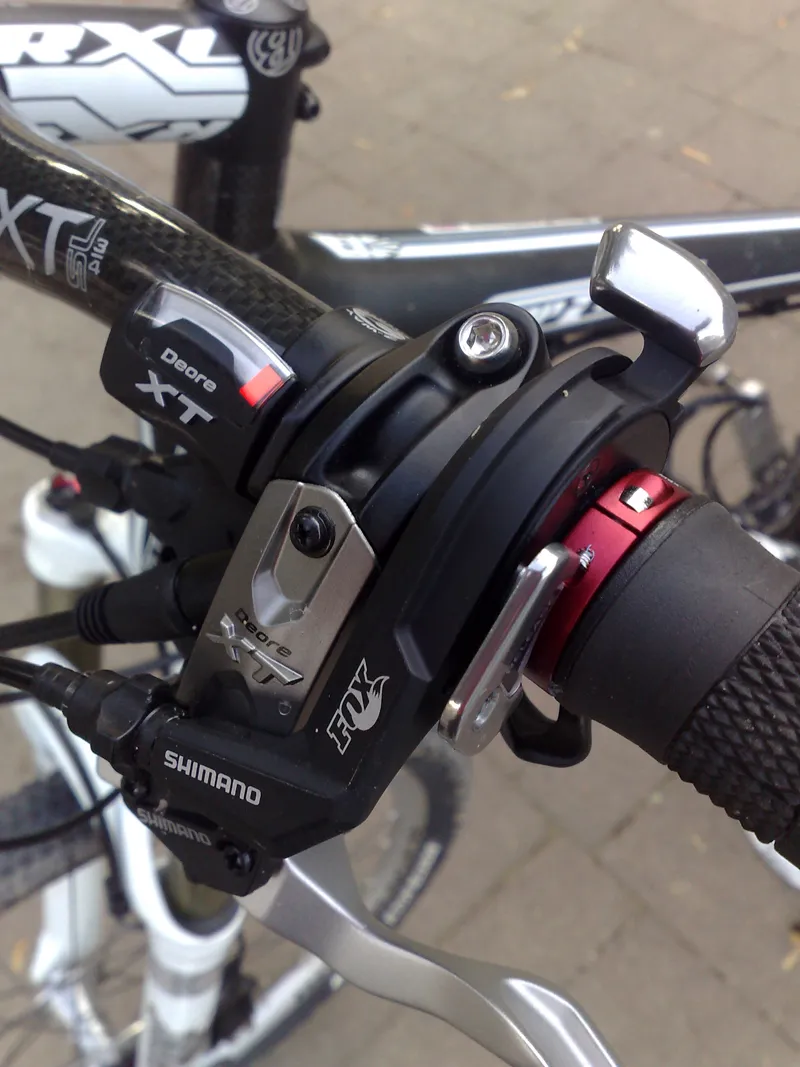
Sitting behind hardtails on the more techy singletrack sections it was obvious how much more settled the 2010 Top Fuel is. The ease with which an overtake rapidly turned into a significant gap on every occasion reinforces its marathon/fast trail credentials even further.
Another big help in maintaining high trail speeds –and something we’ve definitely noticed on 2009 bikes too – is the frame’s high stiffness relative to other ‘race bikes’. This lack of structural deflection (coming from the oversized carbon sections and short, one-piece magnesium Evo Link rocker) means the shock actually gets to work with properly managed in-line forces.
As you’d expect from a very light bike there’s occasional rear wheel twang and step-out when you're chopping round stumps, but it’s totally controllable. Certainly a far cry from other noodley, ghost-shifting, tail-wagging waif bikes we’ve ridden recently.
Handling, weight distribution and general rider ergonomics are all well geared to high velocity, high efficiency riding without overly restricting your fun – something we were very glad of when our excellent Austrian girl guides dived off into proper old-skool super-techy knife-edge rooty singletrack trails with stalling speed switchbacks on the way back into town.
Fuel for thought
In summary, this is an impressively tight feeling bike for its weight and a natural high-speed achiever. Both racers and fast trail riders will love the new shock tunes, power transfer and accuracy of the bike.
The alloy bike (25lb) comes to market right now (there was a big delay on its intended 2009 launch) and offers similar performance at a significantly lower price (from approx £2,000).
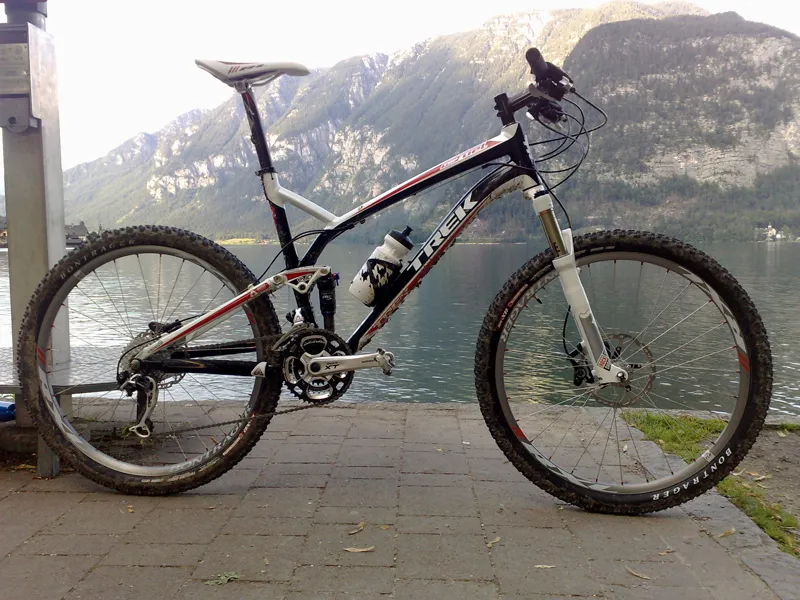
However, with 200g weight coming off the Fuel EX 120mm chassis and a DRCV shock promising the Holy Grail of big-hit and pedalling performance increases, Trek are looking for inter-model clarity, not cross-genre confusion.
Anyway, more on the Fuel EX after we ride it this afternoon and if we manage to complete the 209km and 7,900m of climbing on the Salzkammergut extreme marathon tomorrow!
